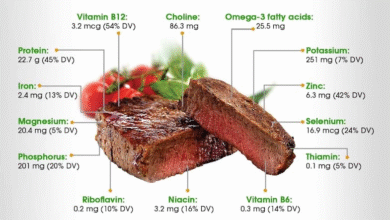Group A Strep: Rising Threat and Progress Toward a Vaccine

Group A strep, scientifically known as Streptococcus pyogenes, is emerging as a significant public health concern in the United States, drawing attention for its alarming rise in infections. This bacterium, which causes illnesses ranging from mild strep throat to severe invasive infections, is responsible for thousands of hospitalizations and deaths each year. As reported by medical experts, the incidence of invasive Group A strep is on the rise, with reports indicating more than 21,000 cases and approximately 2,000 fatalities over a recent span. Health professionals are particularly concerned with the increasing prevalence of scarlet fever and complications such as rheumatic heart disease, which can arise from untreated infections. In response to these growing threats, researchers, like those at the Murdoch Children’s Research Institute, are diligently working toward developing an effective strep vaccine to combat this age-old adversary.
Streptococcus group A, a notorious and potentially deadly bacterium, poses serious health threats, attracting growing concern among healthcare professionals. Known for causing infections ranging from the easily treatable strep throat to life-threatening conditions like sepsis and pneumonia, this pathogen is responsible for a significant number of hospitalizations each year. The rise in cases of invasive Group A strep is alarming, with many regions reporting a concerning increase in infections. Furthermore, the resurgence of diseases such as scarlet fever highlights the urgent need for enhanced awareness and preventive measures. Researchers are striving to create vaccines aimed at mitigating the risks associated with both mild strep infections and more severe complications, prompting a renewed focus on this pressing public health issue.
Understanding Group A Strep Infections
Group A Streptococcus (GAS), commonly referred to as Group A strep, is a type of bacteria that can lead to various infections ranging from mild to severe. The most well-known manifestation of this bacterium is strep throat, which is characterized by a sore throat, fever, and swollen lymph nodes. It is particularly prevalent among children, affecting nearly 20% of pediatric patients in the United States. Strep throat is easily treated with antibiotics, yet the increasing incidence of Group A streptococcus highlights the importance of early diagnosis and timely treatment to prevent potential complications.
In addition to strep throat, Group A strep can cause invasive infections, leading to serious conditions like scarlet fever, rheumatic fever, and even life-threatening diseases such as sepsis and pneumonia. The concern surrounding this bacterium has intensified as reports indicate a rise in invasive Group A strep cases, particularly in populations lacking adequate healthcare access. This underscores the need for better public awareness regarding the signs and symptoms of Group A strep infections to facilitate timely medical intervention.
Frequently Asked Questions
What is Group A strep and how does it relate to strep throat?
Group A strep, or Streptococcus pyogenes, is the bacteria primarily responsible for strep throat, a common infection that can cause sore throat, fever, and swollen lymph nodes. While many strep throat cases are mild, untreated infections can lead to serious complications, including rheumatic fever and scarlet fever.
What are the risks associated with invasive Group A strep infections?
Invasive Group A strep infections can lead to severe health complications such as sepsis, pneumonia, and deep-rooted skin infections. These infections are life-threatening and require immediate medical attention. The incidence of invasive Group A strep has been on the rise, making awareness and early diagnosis critical.
Is there a vaccine for Group A strep available?
Currently, there is no approved vaccine for Group A strep. However, research is underway, with several vaccine candidates in various stages of development, aiming to provide protection against both mild and invasive strains of Group A streptococcus.
How can early detection of strep throat prevent complications?
Early detection and treatment of strep throat with antibiotics can prevent complications associated with Group A strep infections, such as rheumatic fever and invasive disease. Symptoms like severe sore throat, fever, and white patches on the tonsils should prompt a medical evaluation.
What symptoms indicate a possible invasive Group A strep infection?
Symptoms of invasive Group A strep infection can include severe and sudden onset of fever, chills, and intense pain, particularly in muscles or skin, alongside signs of shock or difficulty breathing. If these occur, it is essential to seek immediate medical care.
How does Group A strep spread among children?
Group A strep spreads through respiratory droplets when an infected person coughs or sneezes, and it can also be transmitted through contact with infected wounds or sores. Close contact in schools or daycare settings makes children particularly vulnerable.
What are the current trends in Group A strep infections in the U.S.?
Recent reports indicate a marked increase in Group A strep infections across the U.S., particularly invasive cases affecting thousands each year. Public health officials emphasize the importance of awareness and early treatment to manage these rising rates.
What complications can arise from untreated strep throat?
Untreated strep throat can lead to serious complications, including scarlet fever, rheumatic fever, and rheumatic heart disease. These conditions can have lasting health effects and heighten the risk of severe infectious outcomes.
What preventive measures can reduce the risk of Group A strep infections?
Preventive measures include practicing good hand hygiene, avoiding close contact with infected individuals, and ensuring prompt medical evaluation and treatment for symptoms of strep throat. Awareness of the signs and symptoms is crucial for early intervention.
Why are researchers focused on developing a Group A strep vaccine?
Researchers are prioritizing the development of a Group A strep vaccine to reduce the incidence of infections and related complications, especially in vulnerable populations like children. A safe and effective vaccine could significantly lower the burden of disease associated with this common bacterial pathogen.
| Aspect | Key Information |
|---|---|
| Rising Threat | Group A strep is on the rise globally, particularly affecting children in the U.S. |
| Health Implications | The bacteria can lead to severe conditions like scarlet fever, rheumatic fever, invasive infections, and death. |
| Current Statistics | Over 21,000 reported cases and approximately 2,000 deaths from invasive Group A strep in the U.S. from 2013-2022. |
| Treatment | Penicillin effectively treats Group A strep infections, but early diagnosis is critical to avoid severe outcomes. |
| Vaccine Development | Up to 10 vaccines for Group A strep are in various stages of development, with researchers aiming for effectiveness and public acceptance. |
Summary
Group A strep is becoming a significant health concern in the U.S., with increasing incidence rates and severe health implications. Medical professionals like Dr. Joshua Osowicki are focusing efforts on developing vaccines and improving early diagnosis to prevent the life-threatening complications caused by this bacterium. The importance of addressing Group A strep cannot be overstated, as it exemplifies the need for concerted healthcare initiatives to combat rising infectious threats.




